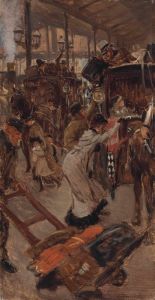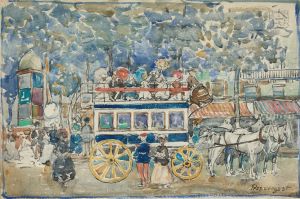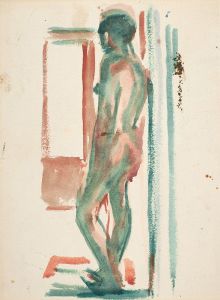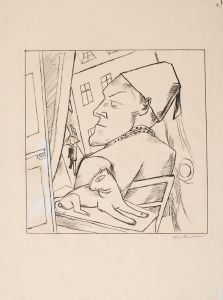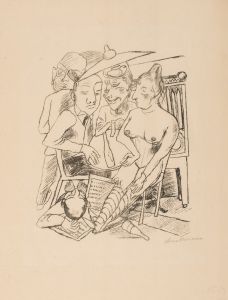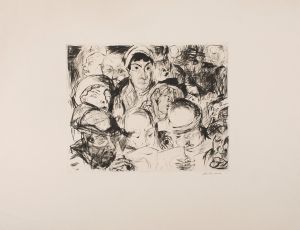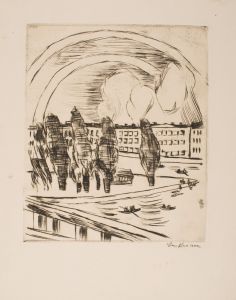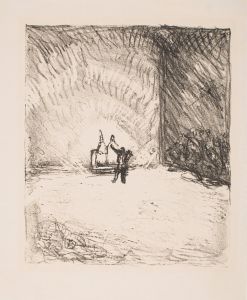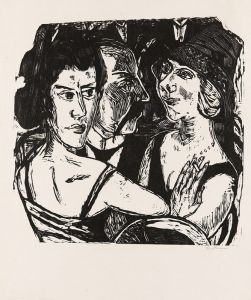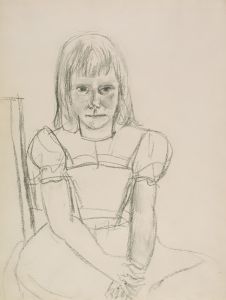
In the Tram
A hand-painted replica of Max Beckmann’s masterpiece In the Tram, meticulously crafted by professional artists to capture the true essence of the original. Each piece is created with museum-quality canvas and rare mineral pigments, carefully painted by experienced artists with delicate brushstrokes and rich, layered colors to perfectly recreate the texture of the original artwork. Unlike machine-printed reproductions, this hand-painted version brings the painting to life, infused with the artist’s emotions and skill in every stroke. Whether for personal collection or home decoration, it instantly elevates the artistic atmosphere of any space.
Max Beckmann's "In the Tram" is a notable work by the German painter, who is recognized for his contributions to the Expressionist movement. Beckmann, born in 1884 in Leipzig, Germany, is known for his unique style that often blends elements of Expressionism and New Objectivity. His works frequently explore themes of modern life, human experience, and the complexities of the social environment during the tumultuous periods of the early 20th century.
"In the Tram" was created during a time when Beckmann was deeply engaged with the social and political changes occurring in Germany. Although specific details about the painting's creation date and its current location are not widely documented, it is understood to be part of Beckmann's exploration of urban life and the human condition. This painting reflects Beckmann's interest in capturing the essence of everyday experiences and the interactions between individuals in public spaces.
The tram, as a subject, is significant in Beckmann's work as it represents the modern, urban environment that was rapidly evolving during his lifetime. Public transportation, such as trams, became a symbol of modernity and the bustling life of cities. In "In the Tram," Beckmann likely sought to depict the diverse range of people who would share such a confined space, each with their own stories and backgrounds, yet momentarily united in their journey.
Beckmann's style is characterized by bold lines, strong contrasts, and a somewhat distorted perspective, which can be seen in "In the Tram." His use of these techniques often serves to emphasize the emotional intensity and psychological depth of his subjects. The figures in the painting are typically rendered with a sense of individuality and complexity, reflecting Beckmann's interest in the human psyche and the social dynamics of his time.
Throughout his career, Beckmann's work was influenced by the historical events he lived through, including World War I and the rise of the Nazi regime. These experiences shaped his worldview and artistic expression, leading him to create works that often contained elements of critique and reflection on society. Although "In the Tram" does not explicitly address these themes, it is part of a broader body of work that captures the zeitgeist of early 20th-century Europe.
Max Beckmann's legacy as an artist is marked by his ability to convey the intricacies of human experience through his distinctive style. "In the Tram" is a testament to his skill in portraying the nuances of urban life and the interactions that define it. While specific details about this particular painting may be limited, its significance lies in its representation of Beckmann's broader artistic vision and his contribution to modern art.
Overall, "In the Tram" exemplifies Beckmann's mastery in capturing the essence of modernity and the human condition, making it a valuable piece within the context of his oeuvre and the history of Expressionist art.





